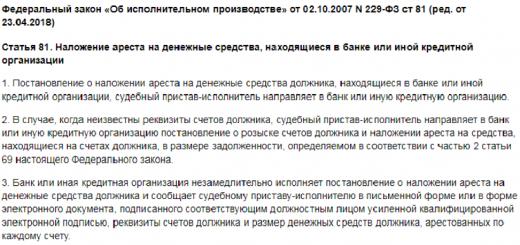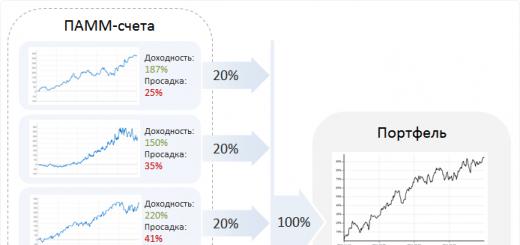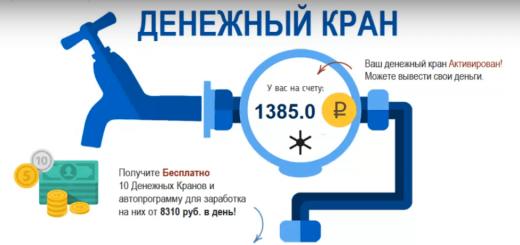It summarizes information about the availability and movement of an enterprise’s investments in various values and capitals. Let us further consider in detail account 58 in accounting, the objects that pass through it, and the features of their recording in reporting.
General information
Account 58 in accounting (on the balance sheet) collects information about the company’s investments in shares, securities, and bonds. This item includes funds invested in authorized capitals other organizations. It also reflects loans provided to third party companies.
Account 58 in accounting: subaccounts
This article may be accessed by:
- Subaccount 58.1 for shares and shares.
- Subaccount 58.2 on debt securities (bonds).
- Subaccount 58.3 on loans provided.
- Subaccount 58.4 for deposits under a simple partnership agreement, etc.
According to Article 58.1, the presence and movement of investments in shares of joint stock companies and share (authorized) capitals of third-party companies are recorded. According to subaccount. 58.2 is the movement of deposits in private and government debt securities. These include, in particular, bonds.
Accounting account 58: postings
In the course of its activities, an enterprise can invest in various assets. All these investments go to account 58. In accounting, these investments are debited. In this case, items reflecting values to be transferred to make the specified deposits are credited. For example, a company's acquisition valuable papers third-party company passes through DB account. 58 and Kd sch. 51 or count. 52 (current or foreign currency accounts, respectively). 
Write-off of excess amounts
If the purchase price of the purchased bonds and other debt securities is higher than the nominal value, then the resulting difference is closed by an entry on the DB account. 76 and Kd sch. 58 and 91. The debit is the amount of income due to be received. The loan reflects the difference between the funds allocated to the account. 76, recording settlements with debtors and creditors, and account. 58. Redemption (redemption) and sale of securities is reflected in the DB account. 91. In this case, account 58 in accounting is credited. Such entries are not made only by those enterprises that show these transactions in their accounts. 90.
Loans
As stated above, they are also reflected in account 58. In accounting, loans that are secured by bills of exchange are treated separately under this item. Movement of funds provided for the use of individuals (except for employees of the enterprise) and legal entities, shown by debit. In this case, account 58 is active in accounting. He corresponds with account. 51 or other similar ones. When loans are repaid, a reverse entry is made. That is, the movement will be along the DB sch. 51 and Kd sch. 58.
Deposits according to the agreement
When a deposit is provided, account 58 in accounting is debited. In the recording he corresponds with the account. 51 and other articles reflecting the movement of allocated property. Accordingly, as in the previous case, upon termination of the contract, a reverse entry is made. Thus, what account 58 will be in accounting - active or passive - depends on the operation being performed. 
Analytics
The construction of accounting should provide the ability to obtain information about long-term and short-term assets. Analytics is carried out on the article under consideration in accordance with the types financial investments and the objects in which they are carried out:
- For companies that sell shares.
- For other enterprises in which the company is a participant.
- By borrowing organizations, etc.
Accounting for investments within a group of interrelated companies, the activities of which are compiled as consolidated reports, is carried out on the account. 58 apart.
Participation in other companies
It is reflected on the account. 58 in various forms. At the same time, the instructions focus on the fact that this article covers values not only transferred for the purpose of making the relevant investments, but also those that are subject to transfer. In the latter case, in particular, we mean securities, the ownership rights to which have already transferred to the acquirer. As a rule, participation in other companies is expressed in the purchase of shares. But the market value of securities constantly fluctuates. During the accounting process, difficulties that arise can become decisive. The previous instructions noted that bonds, shares and other securities are recorded under the heading of financial investments at their purchase price. The new recommendations say nothing about this. This is due to the fact that the procedure in accordance with which assets are assessed is regulated by other regulations. One of them, in particular, is the Regulation on Accounting and Reporting. Clause 44 states that financial investments are fixed in the amount of the investor’s actual expenses. These costs are in some cases higher than the purchase price by the amount of certain expenses. The latter, in particular, may be payment for consulting and information services related to the acquisition of securities, remuneration for the intermediary with the help of whom the transaction was concluded, and so on. 
Compromise solution
In classical terminology, the excess of the exchange rate value over the nominal value is called agio, the decrease is called disaggio. There is a lot of debate in the literature about whether these processes affect the amount of capital of an enterprise. A realistic answer is positive. This is due to the fact that in this case the value of securities and the total price of assets are more accurately reflected. A negative answer will be no less realistic. In this case, the amounts actually invested in securities and, accordingly, in assets will remain. In practice, a compromise solution has been developed. In accounting, agios are not reflected, but disaggios are shown using an account. 59, fixing reserves for impairment of investments in shares and other securities.
Contradictions in norms
In accordance with the account plan, accounting of funds invested in bank deposits is carried out according to subaccounts. "Deposit accounts" (55.3). Another indication is contained in clause 3 of PBU 19/02. This paragraph states that such deposits are recorded by account 58. In accounting, the deposit, according to current legislation, is reflected in the way that the enterprise chooses. In this case, the preferred option can be fixed in financial policy and disclosed in the explanatory note attached to the reporting.
Reflection methods
Thus, you can choose one of the following options:

Many experts are of the opinion that the second option is more appropriate. This is explained by the fact that the deposit is opened to extract additional profit from the provision of the company’s assets on a reimbursable basis.
Shares and shares
The management of an enterprise can invest in the authorized capital of various commercial organizations, purchase their shares, that is, invest in third-party companies. Such activities can be carried out:
- In the form of a cash contribution through the purchase of shares.
- By transferring various types of intangible and tangible assets.
- In the form of direct investments Money into capital.
All these options significantly complicate the characteristics of subaccounts. 58.1. It can thus be called:

As a result, in accordance with these interpretations, three versions of accounting arise. Let's look at them.
Face value
Securities may be accounted for according to this indicator. The advantage of this method is the ease of recording inventory. The balance and the amount of nominal values are equal. The size of the investments taken into account becomes equal to the share corresponding to the capital value of the company to which these shares belong. Among the disadvantages it is worth noting that real price securities almost never correspond to par. This means that the balance on the subaccount. 58.1 will not be real.
Actual acquisition cost
In this case, the balance on the subaccount. 58.1 will reflect the funds actually invested in shares. However, at the same time, it rarely corresponds to the amount of capital that belongs to the acquirer of the company that issued the securities. This circumstance creates certain difficulties in the inventory process.
Current rate
When accounting for this indicator, the balance will show the liquidation value of the securities, that is, the price at which they can be sold at the current moment. However, you need to remember that stock prices are very volatile. This encourages the accountant to constantly re-evaluate them. Accordingly, their inventory becomes more complicated. At the same time, the value of the capital that was actually invested essentially disappears, and the size of the nominal value is quite problematic to calculate. Following the principle of prudence, it is preferable to choose the second and third options. Shares should be accounted for at cost of actual acquisition. However, if the current exchange rate falls below the purchase price, the difference is written off as a loss. 
Conclusion
All investments are reflected in the debit of the “Financial Investments” account for shares and shares in the full amount (at their actual cost). In this case, the denomination size of the paper does not matter. Shares are received according to the actual price. It also does not matter the size of the acquired share in the capital of the company. The buyer must capitalize it at the amount actually received. Shares, like other property, are reflected in the company's balance sheet, provided that it has ownership rights to them. This requirement is established by paragraph 44 of the Reporting Regulations. The moment of his transfer to the papers and the rights secured by them depends on the method of their storage and recording. This may be a special registry system or a depository.
To reflect generalized information about investments and deposits made by organizations in securities, account 58 is used. In the article we will talk about the basic rules for using this account, and also consider in detail examples of recording transactions on account 58.
Account 58 in accounting: features of use
Account 58 is used by enterprises to reflect and analyze the amounts of investments and deposits in bonds, shares, and securities (both other organizations and government ones). When making a deposit, its amount is recorded according to Debit 58, when it is written off - according to Credit 58. Analytical accounting for account 58 is organized in the context of the types of transactions reflected on it (shares, debt loans, deposits, coupon bonds, etc.).
Let's consider typical wiring: (click to expand)
Account 58: account transactions using examples
In order to clearly understand all aspects of accounting for account 58, we use examples.
Account 58. Operations involving the provision of loans
According to the agreement concluded on August 1, 2015, Spectr JSC provides Etude LLC with a loan on the following terms:
- loan amount – 1,415,300 rubles;
- Refund deadline – November 30, 2015;
- interest on borrowed funds is 28% per annum.
Based on the agreement, the accountant of Spektr JSC recorded the following transactions:
Account 58. Accounting for bonds with coupon income
Hidden text
- nominal value - 1241 rubles;
- purchase price – 1315 rubles.
The issuer of the bond is Megapolis JSC.
For this bond you must receive two coupon payments, each of which is 15% of the bond's par value (1,240 rubles * 15% = 186 rubles).
The accountant of Stolitsa JSC carried out the following accounting operations:
| Debit | Credit | Description | Sum | Document |
| 58.2 | 51 | RUR 1,315 | Payment order, agreement | |
| 76 | 58.2 | The write-off of part of the bond value upon receipt of coupon income is reflected ((RUB 1,315 – RUB 1,241) / 2) | 37 rub. | Agreement |
| 76 | 91.1 | The amount of the difference between the coupon income (accrued) and the cost of the bond (written off) is taken into account (186 rubles - 37 rubles) | 149 rub. | |
| 51 | 76 | 186 rub. | Bank statement | |
| 76 | 91.1 | RUB 1,241 | Agreement | |
| 91.2 | 58.2 | RUB 1,241 | Agreement | |
| 51 | 76 | RUB 1,241 | Bank statement |
If the agreement provided for the purchase of a bond at a price of 1063 rubles, then the entries in the accounting of JSC Stolitsa would be as follows:
| Debit | Credit | Description | Sum | Document |
| 58.2 | 51 | Funds were transferred as payment for the purchased bond. The receipt of the purchased bond is taken into account | RUB 1,063 | Payment order, agreement |
| 58.2 | 76 | Reflects additional accrual of part of the bond value upon receipt of coupon income ((RUB 1,241 – RUB 1,063) / 2) | 89 rub. | Agreement |
| 76 | 91.1 | The amount of income on the bond is taken into account - coupon income (accrued) and the cost of the bond (additionally accrued) (186 rubles + 89 rubles) | 275 rub. | Agreement, accounting certificate-calculation |
| 51 | 76 | Funds are credited as coupon income received | 186 rub. | Bank statement |
| 76 | 91.1 | The amount of debt of Megapolis JSC for the redeemed bond is taken into account | RUB 1,241 | Agreement |
| 91.2 | 58.2 | The face value of the bond is written off as expenses | RUB 1,241 | Agreement |
| 51 | 76 | Funds were credited from JSC Megapolis to pay off the debt | RUB 1,241 | Bank statement |
Account 58. Placing a foreign currency deposit
On September 12, 2015, an agreement was concluded between Kvartal JSC and Stolichny Bank for the placement of a deposit:
- deposit amount – USD 54,300;
- placement period – 2 months;
- interest rate – 9.5% per annum.
The conventional US dollar exchange rate was:
- as of September 12, 2015 – 61.47 rubles/dollar. USA;
- as of September 30, 2015 – 61.72 rubles/dollar. USA;
- as of 10/31/2015 – 61.66 rubles/dollar. USA;
- as of 11/12/2015 – 61.22 rubles/dollar. USA.
The accountant of Kvartal JSC recorded the following entries in the accounting:
| Debit | Credit | Description | Sum | Document |
| 58 | 52 | Funds were credited to replenish the deposit in foreign currency (USD 54,300 * 61.47) | RUR 3,337,821 | Bank statement |
| 58 | 91.1 | The exchange rate difference (positive) resulting from the revaluation of the deposit as of September 30, 2015 was taken into account ((USD 54,300 * (61.72 – 61.47) | 13.575 rub. | |
| 76 | 91.1 | Income reflected - interest accrued for 09/2015 ($54,300 * 9.5% / 365 days * 19 days * 61.72) | RUR 16,574 | Banking agreement |
| 91.2 | 58 | The exchange rate difference (negative) resulting from the revaluation of the deposit as of 10/31/2015 was taken into account ((USD 54,300 * (61.72 – 61.66) | RUR 3,258 | Accounting statement, bank agreement |
| 91.2 | 76 | The exchange rate difference (negative) resulting from the revaluation of interest for 09/2015 was taken into account ((USD 54,300 * 9.5% / 365 days * 19 days * (61.72 – 61.66) | 16 rub. | Accounting statement, bank agreement |
| 76 | 91.1 | Income reflected - interest accrued for 10/2015 ($54,300 * 9.5% / 365 days * 31 days * 61.66) | RUR 27,014 | Banking agreement |
| 91.2 | 58 | The exchange rate difference (negative) resulting from the revaluation of the deposit as of November 12, 2015 was taken into account ((USD 54,300 * (61.66 – 61.22) | RUR 23,892 | Accounting statement, bank agreement |
| 91.2 | 76 | The exchange rate difference (negative) resulting from the revaluation of interest for 10/2015 was taken into account ((USD 54,300 * 9.5% / 365 days * 31 days * (61.66 – 61.22) | 193 rub. | Accounting statement, bank agreement |
| 76 | 91.1 | Income reflected - interest accrued for 11/2015 ($54,300 * 9.5% / 365 days * 12 days * 61.22) | RUB 10,383 | Banking agreement |
| 52 | 58 | The deposit return amount is reflected - credited to the foreign currency account (USD 54,300 * 61.22) | RUR 3,332,246 | Bank statement |
| 52 | 76 | Funds were credited to the foreign currency account to pay off interest on the deposit (USD 54,300 * 9.5% / 365 days * 62 days * 61.22) | RUB 53,643 | Bank statement |
Account 58. Accounting for transactions with bills of exchange
As of November 1, 2015, the debt of Revansh JSC to the thermal energy supply company Teplovik amounted to 12,954 rubles, VAT 1,976 rubles. In November 2015, Revansh JSC acquired a bill of exchange from Teplovik at a price of RUB 9,340. (nominal value - 12,954 rubles). The promissory note was purchased to pay off the debt of Revansh JSC to the Teplovik company, which was done on November 30, 2015.
The accountant of Revansh JSC made the following entries in the accounting:
| Debit | Credit | Description | Sum | Document |
| 20 | 60 | The cost of thermal energy consumed by Revansh JSC as of 11/01/2015 is taken into account (RUB 12,954 – RUB 1,976) | RUR 10,978 | Acts, receipts |
| 19 | 60 | The amount of VAT is reflected on the cost of consumed thermal energy | RUR 1,976 | Invoice |
| 68 VAT | 19 | VAT is accepted for deduction | RUR 1,976 | Invoice |
| 58 | 51 | The transaction of purchasing a bill of exchange from the company “Teplovik” is reflected. | RUR 9,340 | Agreement |
| 76 | 91.1 | The bill “Teplovik” was presented for payment | RUB 12,954 | Bill of exchange |
| 91.2 | 58 | The accounting (book) value of the bill is written off as expenses | RUR 9,340 | Bill of exchange |
| 60 | 76 | The operation of debt offset between “Revenge” and “Teplovik” is reflected | RUB 12,954 | Bill of exchange |
| 91.9 | 99 | The amount of profit received at the end of November 2015 is taken into account (RUB 12,954 – RUB 9,340) | RUR 3,614 | Turnover balance sheet |
Accounting for transactions with securities is necessary both in organizations that issue them and in enterprises that purchase shares as equity participation. In this article we will look at typical transactions on account 58 accounting on securities (sale, revaluation, loan) with examples.
A security is a document that certifies the property rights of the holder. Such rights can be exercised and transferred only upon presentation of paper. The main types of securities include:
- stock;
- bills;
- bonds;
- checks;
- privatization papers:
- certificates of deposit.
A security is a document that, on the one hand, is used for financial investments, and on the other, to attract loans.
Subaccounts 58 accounts
Typically, accounting is kept in the following subaccounts of account 58
Accounting for securities on account 58
Let's look at the basic entries for accounting for transactions with securities using examples.
Purchase of shares
Mint LLC acquired a stake of 15 shares from Flagman LLC. at a price of 7200 rub. per share. The acquisition was made through an intermediary, JSC Kommersant, whose services amounted to 3,650 rubles.
In the accounting of Mint LLC, entries were made to account 58:
Revaluation of securities
The records of Mint LLC include shares of Flagman LLC (15 pieces, book value 7,200 rubles/piece). Accounting policy Mint LLC provides for a quarterly revaluation of shares in accordance with their market value. The market price of the share as of the end of the reporting quarter was RUB 8,115/piece.
In the accounting of Mint LLC, the additional valuation of the share was reflected by the following entry:
Sale of securities
JSC Marathon acquired shares of LLC Magnat, the total cost of which was 137,000 rubles. As of December 31, 2015, stock quotes were RUB 124,000. In April 2016, Marathon JSC sold shares of Ballet LLC at a price of 148,000 rubles.
In the accounting of JSC Marathon, these transactions were reflected as follows:
| Dt | CT | Description | Sum | Document |
| 76 | Reflection of the share price under the agreement with Magnat LLC | 137,000 rub. | Sales and purchase agreement with Magnat LLC | |
| 76 | Transfer of the value of shares in favor of Magnat LLC | 137,000 rub. | Payment order | |
| 91 | Formation of a reserve (the difference between the market and book value of shares) RUB 137,000. — 124,000 rub. | 13,000 rub. | ||
| 91 | Reflection of the book value of shares sold by Ballet LLC | 137,000 rub. | ||
| 62 | 91 | Reflection of the value of shares sold in accordance with the agreement | 148,000 rub. | Sales and purchase agreement with LLC "Ballet" |
| 91 | Reflection of an increase in the value of shares due to a previously formed reserve | 13,000 rub. | Stock Market Quote Report | |
| 62 | Transfer of funds from Ballet LLC for sold shares | 148,000 rub. | Bank statement | |
| 91 | 99 | Reflection of profit from the sale of shares (RUB 148,000 + RUB 13,000 - RUB 137,000) | 24,000 rub. | Sales and purchase agreement with LLC "Ballet" |
Example of entries on account 09 for borrowing securities
Let us consider securities borrowing operations using the example of purchasing bonds registered with their owner.
Let’s imagine that Kremniy LLC purchased bonds from Sapphire JSC with a total nominal value of 351,000 rubles. In addition, Kremniy LLC incurred additional expenses for the purchase of bonds in the amount of RUB 84,000. The bonds provide for an income payment of 1.5% monthly. The maturity of the bonds is 9 months, i.e. after this time, Sapphire JSC is obliged to buy back the securities, thus repaying the loan.
The following entries were made in the accounting of Kremniy LLC:
| Dt | CT | Description | Sum | Document |
| 76 | Reflection of costs for purchasing bonds from JSC Sapphire | RUB 351,000 | ||
| 76 | 91 | Accrual of income (the difference between the nominal value of bonds and the costs of their acquisition) (351,000 rubles - 84,000 rubles) / 9 months. | 667 rub. | Bond placement agreement |
| 76 | 91 | Accrual of interest income (RUB 351,000 * 1.5%) | RUR 5,265 | Bond placement agreement |
| 76 | Transfer of funds from Sapphire JSC towards interest repayment | RUR 5,265 | Bank statement | |
| 91 | Reflection of the value of bonds on the balance sheet | RUB 351,000 | Bond placement agreement | |
| 76 | 91 | Sale of bonds of JSC Sapphire (loan repayment) | RUB 351,000 | Bond placement agreement |
In the process of financial and economic activity, enterprises strive to make financial investments, using temporarily free funds for this. Such actions are taken in order to prevent inefficient use of available resources and maximize company profits.
Within the framework of this topic, we will talk about the concept and types of securities, about the work of position 59, consider the correspondence of accounts, standard accounting entries, and also focus on one of the practical examples.
Definition and classification of documents giving the right to a share in capital
By this category, experts mean monetary documents that confirm the right to own capital or indicate the nature of the relationship between the owner of the document and its issuer.
The functions of such monetary documents as an object of market relations are as follows:
- mobilization of savings of individuals and free resources of enterprises to cover expenses;
- regulation of money circulation;
- acting as a source of investment designed to create new companies or develop existing ones;
- fulfilling the role of a credit settlement instrument;
- redistribution of funds between industries and sectors of the economy;
- granting the right to capital;
- transfer of rights to manage the company;
- acting as a source of income.
In world practice, all existing financial instruments are divided into basic and derivative financial instruments or derivatives. In the first case, we are talking about documents based on the property right to a certain asset.
If we are talking about derivatives, then in this case we are talking about a non-documentary form of right to property that appears due to a change in the value of the financial instrument that underlies it.
If we take the form of issue as a basis, then we can distinguish issue-grade securities, for example, shares, and non-issue securities, for example, checks and bills.
If we classify documents according to the order of ownership, then we should distinguish between registered, warrant and bearer papers.
In practice, there are many other criteria by which designated monetary settlement documents can be classified.
The meaning of position 58 in accounting
The designated account is designed to provide detailed accounting of the company's cash investments.
Analytics for this account is carried out for separate sub-accounts, including:
- 1 – accounting for investments in shares and shares;
- 2 – investing in debt instruments.
Investments of a company or organization are reflected in the debit part 58 of the account and the credit part of those positions where the values that are subject to transfer on account of such investments are recorded. Thus, the company’s purchase of securities of third-party companies is recorded in the debit part of position 58 and the credit part of position 51 or 52.
If an amount is written off that exceeds the purchase price of debt obligations over their nominal price, then the accounting department reflects these funds as a debit of 76 and a credit of 58 positions.
If the company decides to sell existing securities or pay off their value, then these funds are recorded in debit 91 and credit 58 positions.
Possible correspondence
In order for the company's management to have a complete understanding of the financial condition of the enterprise, the analytics for the designated position must reflect short-term and long-term cash investments. In the debit part 58, the position of the Chart of Accounts corresponds to accounts 50, 51, 52, 75, 80, 91 and 98.
For a loan, a combination with 51, 52, 76, 80, 90, 91 and 99 accounts is possible.
Standard accounting entries
Standard accounting entries for item 58 are reflected in the following entries:
Kt 52 – purchase of shares using funds in a foreign currency account;
Kt 51 – purchase of ruble bonds;
Kt 91 – reflects the difference between the initial and nominal price of the bonds;
Kt 58.3 – loan repayment in non-cash form, etc.
Case Study
On September 1, 2017, a loan agreement was concluded between the two enterprises in accordance with the following conditions:
- loan amount – 1,517,800 rubles;
- loan term – until December 30, 2017;
- The interest rate on the loan is 28% per annum.

Account 58 “Financial Investments” is intended to summarize information on the availability and movement of an organization’s investments in government securities, shares, bonds and other securities of other organizations, authorized (share) capital of other organizations, as well as loans granted to other organizations.
Sub-accounts can be opened for account 58 “Financial investments”:
- 58.1 "Units and shares"- the presence and movement of investments in shares are taken into account joint stock companies, authorized (share) capitals of other organizations, etc.
- 58.2 "Debt securities"- the presence and movement of investments in government and private debt securities (bonds, etc.) are taken into account.
Financial investments made by the organization are reflected in the debit of account 58 “Financial investments” and the credit of accounts that record the values to be transferred on account of these investments. For example, the acquisition by an organization of securities of other organizations for a fee is carried out in the debit of account 58 “Financial investments” and the credit of the account “Currency accounts” or “Currency accounts”.
For debt securities for which the current market value is not determined, the organization is allowed to assign the difference between the initial value and the nominal value during their circulation period evenly, as income is due on them in accordance with the terms of issue, to financial results a commercial organization or a decrease or increase in expenses of a non-profit organization.
When writing off the amount in excess of the purchase price of bonds and other debt securities acquired by the organization over their nominal value, entries are made in the debit of the account “Settlements with various debtors and creditors” (for the amount of income receivable on the securities) and in the credit of account 58 “Financial investments” (for part of the difference between the purchase and nominal value) and “Other income and expenses” (for the difference between the amounts allocated to the accounts “Settlements with various debtors and creditors” and “Financial investments”).
When additionally accruing the amount of excess of the nominal value of bonds and other debt securities acquired by the organization over their purchase price, entries are made in the debit of accounts “Settlements with various debtors and creditors” (for the amount of income due to be received on securities) and 58 “Financial investments” (for part of the difference between the purchase and nominal value) and a credit to the "Other income and expenses" account (on total amount, attributed to accounts “Settlements with various debtors and creditors” and 58 “Financial investments”).
Redemption (redemption) and sale of securities accounted for on account 58 "Financial investments" are reflected in the debit of the "Other income and expenses" account and the credit of account 58 "Financial investments" (except for organizations that reflect these transactions on the "Sales" account) . - 58.3 "Loans provided"- the movement of monetary and other loans provided by the organization to legal entities and individuals (except for employees of the organization) is taken into account. Provided by the organization to legal and individuals(except for employees of the organization) loans secured by bills of exchange are accounted for separately in this subaccount.
Loans provided are reflected in the debit of account 58 “Financial investments” in correspondence with the account “Current accounts” or other relevant accounts. The repayment of the loan is reflected in the debit of the "Current accounts" account or other relevant accounts and the credit of account 58 "Financial investments". - 58.4 "Deposits under a simple partnership agreement"- the partner organization takes into account the presence and movement of contributions to the common property under the simple partnership agreement.
The provision of a deposit is reflected in the debit of account 58 “Financial investments” in correspondence with the account “Current accounts” and other relevant accounts for accounting for allocated property.
Upon termination of a simple partnership agreement, the return of property is reflected in the credit of account 58 “Financial investments” in correspondence with the property accounts. - and etc.
Analytical accounting account 58 “Financial investments” is maintained by type of financial investment and the objects in which these investments were made (organizations that sell securities; other organizations in which the organization is a participant; borrowing organizations, etc.). The construction of analytical accounting should provide the ability to obtain data on short-term and long-term assets. At the same time, accounting for financial investments within a group of interrelated organizations, about the activities of which a consolidated report is compiled financial statements, is maintained on account 58 “Financial investments” separately.










